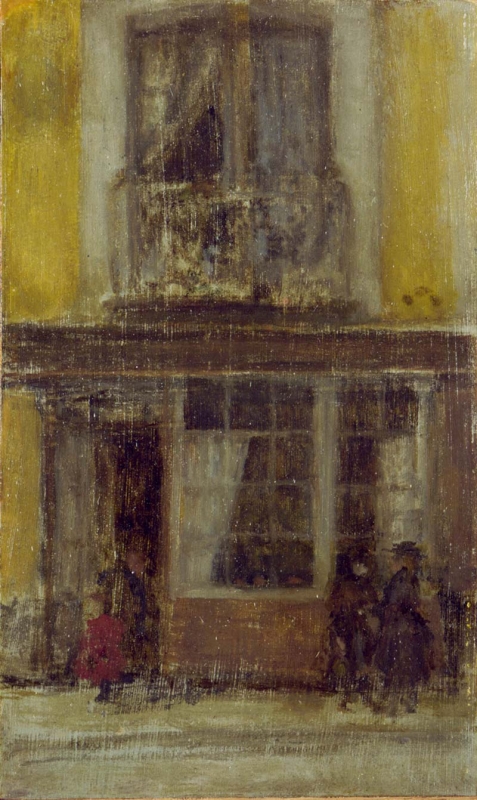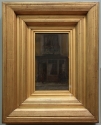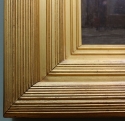Technique
The panel is primed in grey, with pronounced application brushmarks in the long (vertical) direction. The priming is visible between the painted elements, and was largely used for the grey pavement. Shadowy lines beneath some of the vertical elements suggest an underlying charcoal drawing that was picked up by the paint, but infra-red images do not confirm this. 1 Most areas have a single layer of paint or no paint: few colours were used for this rapid sketch. The colours – touches of pink and green, brown and grey – are tinted on to the windows as thinly as watercolour. The figures are painted carefully with a tiny pointed brush, except for the child, who is a smudge of red. The figures were put in after the rest of the panel had dried. It is highly worked, with a subtle arrangement of angles, from the bow-topped windows to the drawn curtains.
Conservation History
The panel has an auxiliary backing and framing device, both made from mahogany-type hardwood, with adhered thin battens that have mitred corners, possibly made for exhibition in 1905. 2
Frame
Grau-style frame, dating from the late 1890s or early 1900s. 3 Size: 48.0 x 38.2 x 6.9 cm.
Last updated: 25th November 2020 by Margaret








